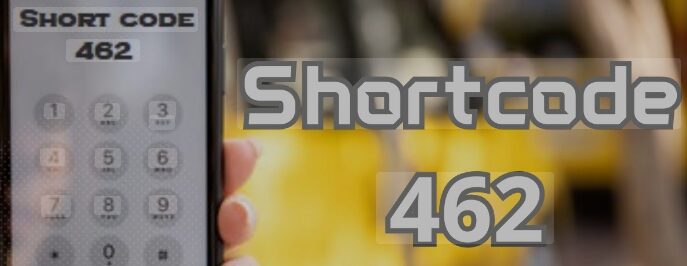Have you ever received a text message from a short, three-digit number and wondered where it came from? If the number 462 has appeared in your message inbox or your phone’s usage logs, you’ve encountered a specific type of communication known as a short code. While often legitimate, it’s important to understand what these codes are and why you might be receiving messages from them.
This article breaks down the purpose of the 462 text code, who might be using it, and how to manage the messages you receive.
What Is a Text Short Code?

Before diving into the specifics of 462, it’s helpful to understand the system it belongs to. Unlike standard 10-digit phone numbers, short codes are 3-to-6-digit numbers leased by businesses, government agencies, and other organizations to send and receive text messages at a high volume. They are commonly used for a wide range of services, including:
- Marketing promotions and alerts
- Two-factor authentication and security verification
- Customer service notifications
- Charitable donations
- Voting and polling
The 462 text code falls into this category, operating as a channel for automated or bulk messaging.
Investigating the 462 Text Code
The 462 text code has been primarily associated with Google, particularly for account verification purposes. When you set up a new Google account, try to log in from an unfamiliar device, or reset your password, Google needs to verify that you are the legitimate account owner. One way it does this is by sending a one-time passcode (OTP) or verification link to the phone number linked to your account.
If you receive a message from the 462 text code, it is highly likely that it contains a Google verification code. This is a critical security feature designed to protect your Gmail, Google Drive, and other related accounts from unauthorized access.
What to Do When You Receive a Message from 462
Your response should depend entirely on whether you initiated the action that triggered the verification text.
If You Requested the Code
If you were actively trying to log in to a Google service or change your account settings, the text from 462 is an expected and necessary step. Simply use the code provided in the message to complete the verification process on the Google website or app. Remember that these codes are time-sensitive and will expire after a short period.
If the Message Was Unexpected
Receiving an unsolicited verification code from the 462 text code requires immediate attention, as it can be a significant security warning. It likely means one of two things:
- A Mistyped Number: Someone else may have accidentally entered your phone number while trying to access their own Google account.
- A Takeover Attempt: A more serious possibility is that someone has obtained your username and password and is actively trying to break into your Google account. The text message you received is proof that Google’s security systems have detected the unusual login attempt and are working to block it.
In this scenario, follow these critical steps:
- Do NOT share the code: Never give the verification code to anyone, even if they contact you pretending to be from Google support. This is a common tactic scammers use to gain final access to your account.
- Immediately change your password: Log in to your Google account (by navigating directly to the official site, not by clicking any links in the text) and create a new, strong, and unique password.
- Conduct a security checkup: Use Google’s Security Checkup tool to review your account’s recent activity, check which devices are logged in, and remove any that you don’t recognize.
- Strengthen your security: Ensure that two-factor authentication (2FA) is enabled on your account for an added layer of protection.
In conclusion, the 462 text code is a legitimate short code most often used by Google for account security. While the code itself is not a scam, an unexpected message from it should be treated as a serious alert to review and secure your account credentials immediately.


